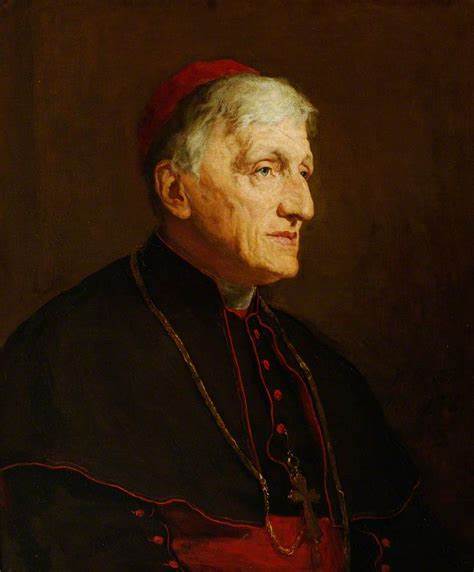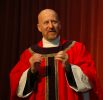- Feb 5, 2002
- 166,683
- 56,299
- Country
- United States
- Faith
- Catholic
- Marital Status
- Married
- Politics
- US-Others
Fr. Dwight Longenecker
There is a fair bit of uninformed talk in the church during this synod on synodality about the development of doctrine. Various hot button issues are discussed in breathless terms by progressives who are all excited about the possibility of change.
First we should affirm that, while church doctrine does not change our understanding of the doctrine may develop. After all, Jesus promised that the Holy Spirit would teach us all things and lead us into all truth. It is implied therefore that the disciples’ understanding of Our Lord’s teaching was incomplete. Time would bring further understanding and amplification.
St John Henry Newman–the great convert from Anglicanism–and one of the greatest theologians wrote “Notes on the Development of Doctrine. You can read the whole essay here.
Here is a brief summary and outline of Newman’s seven notes to help us assess any proposed “developments” that come from the synod.
The notes can be best understood with the analogy of an acorn growing into an oak tree. Newman’s first note is ‘preservation of type.’ This just means that a validly developing doctrine does not become something essentially different. The oak tree was in the acorn all along, even though the oak tree and the acorn look completely different. On these terms one might argue that monogamy was a natural development from polygamy because it was a refinement and a focussing of what was already present in polygamy–the idea of a man and woman being faithful to one another in a marriage contract. However, Newman’s first note would exclude homosexual marriage from being a valid development because two men marrying one another is not a development from the essential idea of marriage, but a radical deviation.
The second note is ‘continuity of principles’. That is to say, the underlying principles of the doctrine do not change although they may flower and grow and develop. So, for example, the underlying principle of Marian beliefs is that Mary is a pure Virgin full of grace. This principle or abstract underlying belief is expounded and clarified with a developed doctrine like the Immaculate Conception. The underlying principle of marriage is the natural complementarity of the sexes within the created order for the purpose of procreation. This understanding may flower and grow (as it does in John Paul II’s Theology of the Body) but the underlying principle does not change–as it would, for example in homosexual marriage.
Continued below.

 dwightlongenecker.com
dwightlongenecker.com
There is a fair bit of uninformed talk in the church during this synod on synodality about the development of doctrine. Various hot button issues are discussed in breathless terms by progressives who are all excited about the possibility of change.
First we should affirm that, while church doctrine does not change our understanding of the doctrine may develop. After all, Jesus promised that the Holy Spirit would teach us all things and lead us into all truth. It is implied therefore that the disciples’ understanding of Our Lord’s teaching was incomplete. Time would bring further understanding and amplification.
St John Henry Newman–the great convert from Anglicanism–and one of the greatest theologians wrote “Notes on the Development of Doctrine. You can read the whole essay here.
Here is a brief summary and outline of Newman’s seven notes to help us assess any proposed “developments” that come from the synod.
The notes can be best understood with the analogy of an acorn growing into an oak tree. Newman’s first note is ‘preservation of type.’ This just means that a validly developing doctrine does not become something essentially different. The oak tree was in the acorn all along, even though the oak tree and the acorn look completely different. On these terms one might argue that monogamy was a natural development from polygamy because it was a refinement and a focussing of what was already present in polygamy–the idea of a man and woman being faithful to one another in a marriage contract. However, Newman’s first note would exclude homosexual marriage from being a valid development because two men marrying one another is not a development from the essential idea of marriage, but a radical deviation.
The second note is ‘continuity of principles’. That is to say, the underlying principles of the doctrine do not change although they may flower and grow and develop. So, for example, the underlying principle of Marian beliefs is that Mary is a pure Virgin full of grace. This principle or abstract underlying belief is expounded and clarified with a developed doctrine like the Immaculate Conception. The underlying principle of marriage is the natural complementarity of the sexes within the created order for the purpose of procreation. This understanding may flower and grow (as it does in John Paul II’s Theology of the Body) but the underlying principle does not change–as it would, for example in homosexual marriage.
Continued below.

Newman’s Notes on the Development of Doctrine. | Fr. Dwight Longenecker
There is a fair bit of uninformed talk in the church during this synod on synodality about the development of doctrine. Various hot button issues are discussed in breathless terms by progressives who are all excited about the possibility of change. First we should affirm that, while church...
